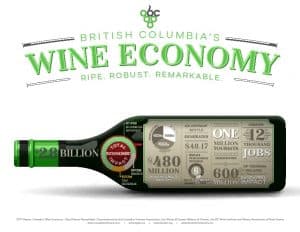BC wine and grape industry contributes $2.8 billion to provincial economy
KELOWNA – A recent Canadian wine and grape industry research study shows that the BC wine and grape industry is a significant driver of the provincial economy contributing $2.8 billion in 2015, the BC Wine Institute announced today.
“Our wine and grape industry is seeing phenomenal growth thanks in large part to the provincial government’s BC Liquor Policy Review and subsequent recommendations,” said Miles Prodan, President and CEO of the BC Wine Institute.
The figure comes from the recently released report “Canada’s Wine Economy – Ripe, Robust, Remarkable”, authored by Frank, Rimerman and Company. The report notes that Canada’s wine and grape industry is burgeoning having grown 33 per cent since 2013 to $9 billion of which BC’s contributes 31 per cent. BC is Canada’s second largest wine grape producing province next to Ontario in terms of acreage, tonnage and wine grape sales.
“What is impressive about these numbers is that most BC wineries and grapegrowers are small, family-owned agri-businesses (farmers),” adds Prodan. “These small businesses are creating 12,000 full-time BC jobs.”
For every dollar spent on farm-to-glass 100 per cent BC wine in British Columbia, $3.40 in gross domestic product (GDP) is generated across the province. Each dollar spent on imported wine generates just $1.43 in provincial GDP.
During the BC Government’s Liquor Policy Review, British Columbians, including consumers, labour, health and industry advocates, added their voices to one of the broadest provincial engagement processes in BC history. The resulting report provided a roadmap to liquor modernization through its 73 recommendations. Of those recommendations, 65 have already been implemented including allowing 100 per cent BC wine sales at local farmers’ markets and on select grocery store shelves.
“BC’s wine industry is continuing to grow due in part to a strong working relationship between vintners and government,” says Coralee Oakes, Minister or Small Business, Red Tape Reduction, and Responsible for the Liquor Distribution Branch. “Together, we are working to expand this important sector of our economy and culture, help businesses grow and increase consumer choice.”
Since the implementation of the review, BC VQA (100 per cent certified BC wine) market share in BC has grown by 355,000 cases and a record high of 17 per cent. BC Liquor Stores sales are up by 110,000 cases; restaurants are up 48,000 cases; and private liquor store sales are up 31 per cent (72,000 cases).
“BC wine consumers, by whom the industry survives, have determined that BC’s liquor policy modernization makes sense and delivers the convenience and choice for which they asked,” said Prodan.
In addition, the economic report showed that 1 million tourists visited BC wineries in 2015, generating $600 million.
The BC wine and grape industry is certainly ripe, robust and remarkable.
 Quick Facts – British Columbia Wine & Grape Industry
Quick Facts – British Columbia Wine & Grape Industry
- The British Columbia Wine Industry’s $2.8 billion economic impact is a significant driver to the BC economy.
- The British Columbia wine and grape industry contributed to the British Columbia economy business revenue of $1.95 billion, tax revenues of $312 million, and wages of $512 million.
- An average bottle of wine produced in British Columbia generates $33.84 of business revenue, $5.42 of tax revenue and $8.91 of wages
- For every $1.00 spent on Canadian wine in British Columbia, $3.40 in GDP is generated across the province.
- In 2015, there were approximately 929 grape growers operating in British Columbia with a combined acreage of 10,260 grape-bearing acres.
- 12,000 full time jobs are created in British Columbia as a result of the wine and grape Industry.
- In 2015, there were 275 wineries in British Columbia that sold nearly 4.8 million nine-litre equivalent cases of wine.
- British Columbia wine industry tourism generated $246 million in revenue for the broader British Columbia economy in 2015.
- Approximately one million tourists visited British Columbia wineries in 2015.
Complete findings of the study can be found in the research report, Canada’sWine Economy – Ripe Robust Remarkable.







